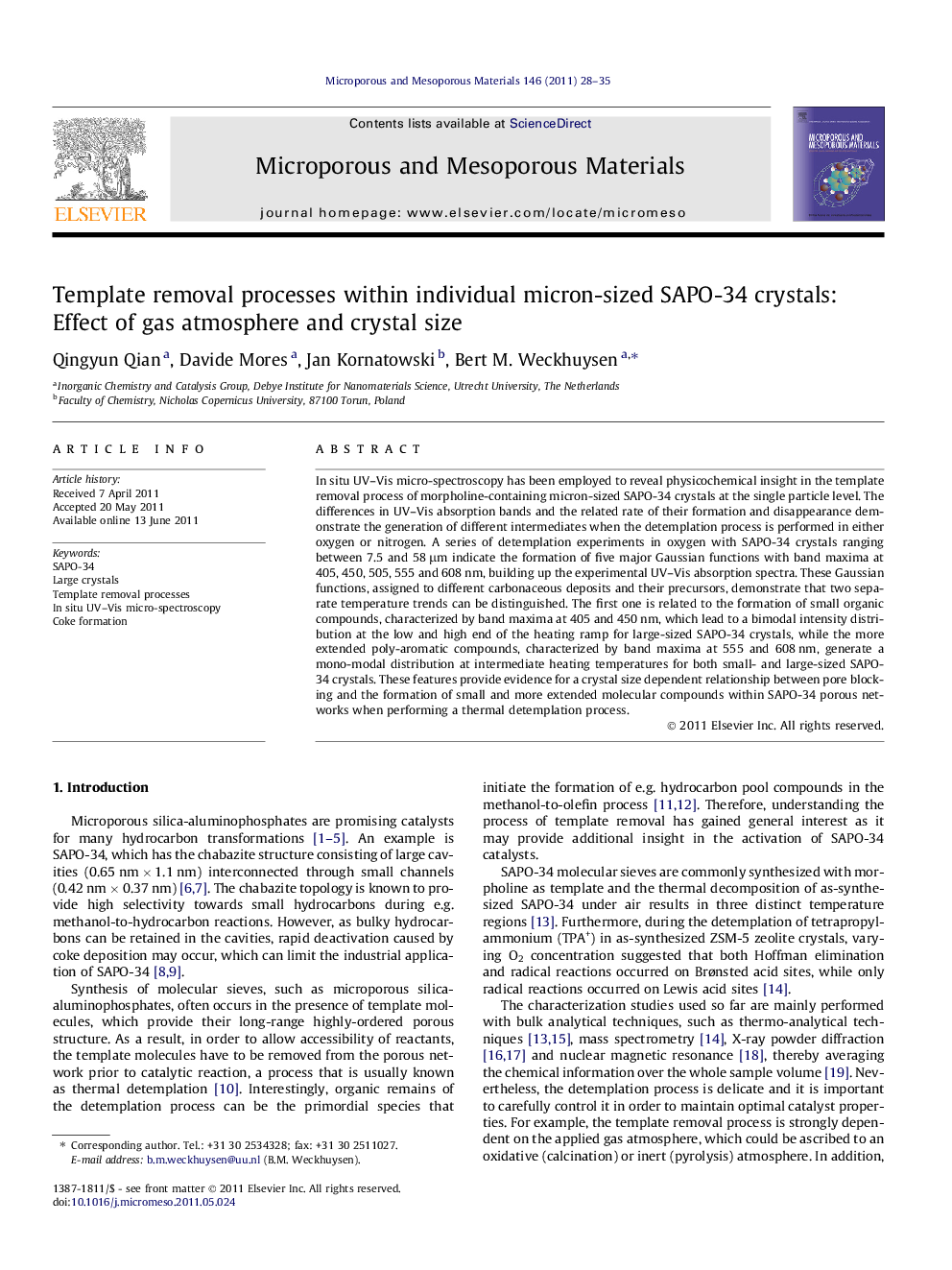| Article ID | Journal | Published Year | Pages | File Type |
|---|---|---|---|---|
| 74179 | Microporous and Mesoporous Materials | 2011 | 8 Pages |
In situ UV–Vis micro-spectroscopy has been employed to reveal physicochemical insight in the template removal process of morpholine-containing micron-sized SAPO-34 crystals at the single particle level. The differences in UV–Vis absorption bands and the related rate of their formation and disappearance demonstrate the generation of different intermediates when the detemplation process is performed in either oxygen or nitrogen. A series of detemplation experiments in oxygen with SAPO-34 crystals ranging between 7.5 and 58 μm indicate the formation of five major Gaussian functions with band maxima at 405, 450, 505, 555 and 608 nm, building up the experimental UV–Vis absorption spectra. These Gaussian functions, assigned to different carbonaceous deposits and their precursors, demonstrate that two separate temperature trends can be distinguished. The first one is related to the formation of small organic compounds, characterized by band maxima at 405 and 450 nm, which lead to a bimodal intensity distribution at the low and high end of the heating ramp for large-sized SAPO-34 crystals, while the more extended poly-aromatic compounds, characterized by band maxima at 555 and 608 nm, generate a mono-modal distribution at intermediate heating temperatures for both small- and large-sized SAPO-34 crystals. These features provide evidence for a crystal size dependent relationship between pore blocking and the formation of small and more extended molecular compounds within SAPO-34 porous networks when performing a thermal detemplation process.
Graphical abstractFigure optionsDownload full-size imageDownload as PowerPoint slideHighlights► The detemplation process in SAPO-34 crystals was studied at the single particle level. ► A faster and more complete removal of morpholine as template occurs in O2 than in N2. ► Small-sized crystals suffer from less severe pore blocking. ► Large-sized crystals experience a slower template burning.
